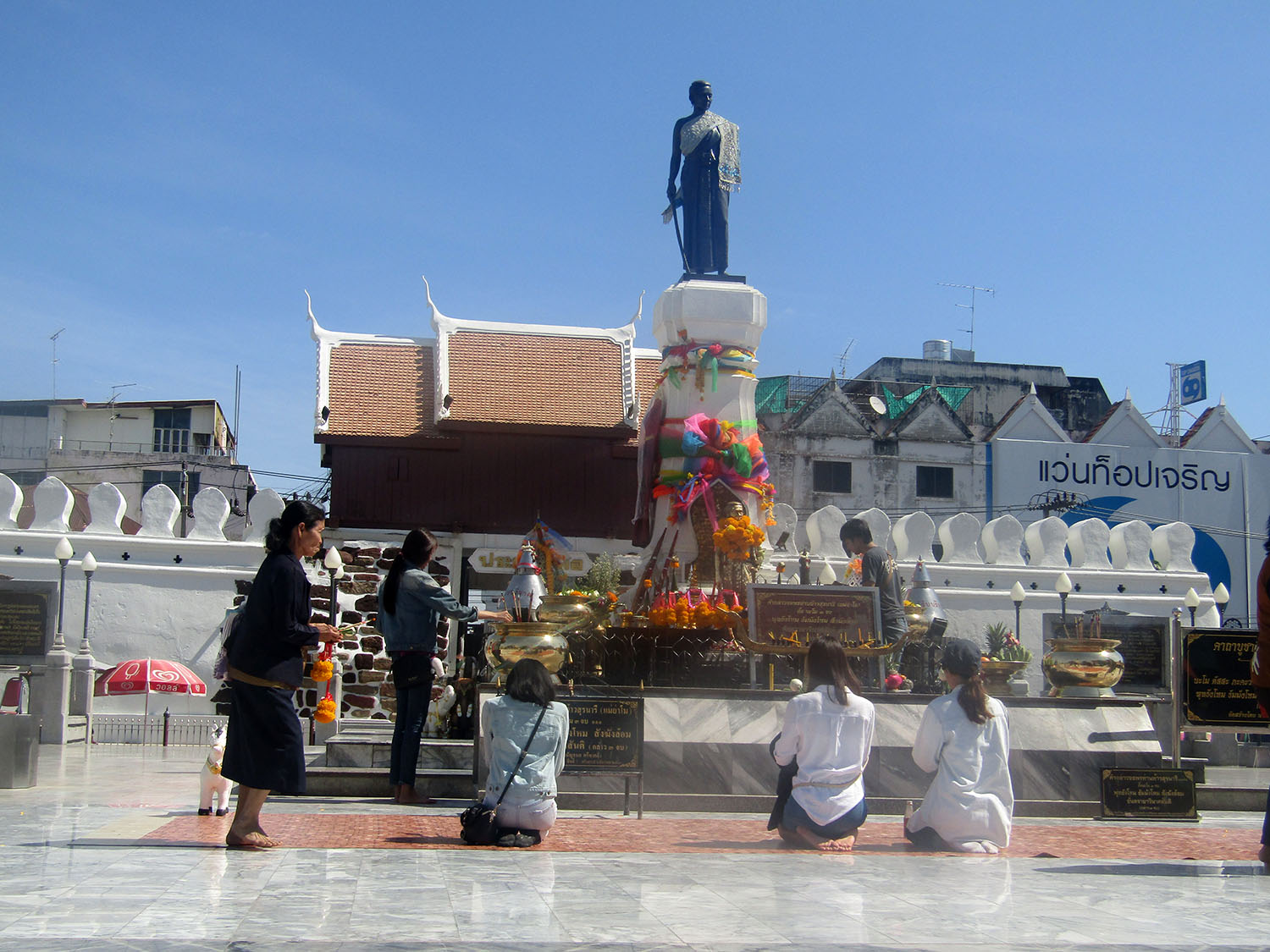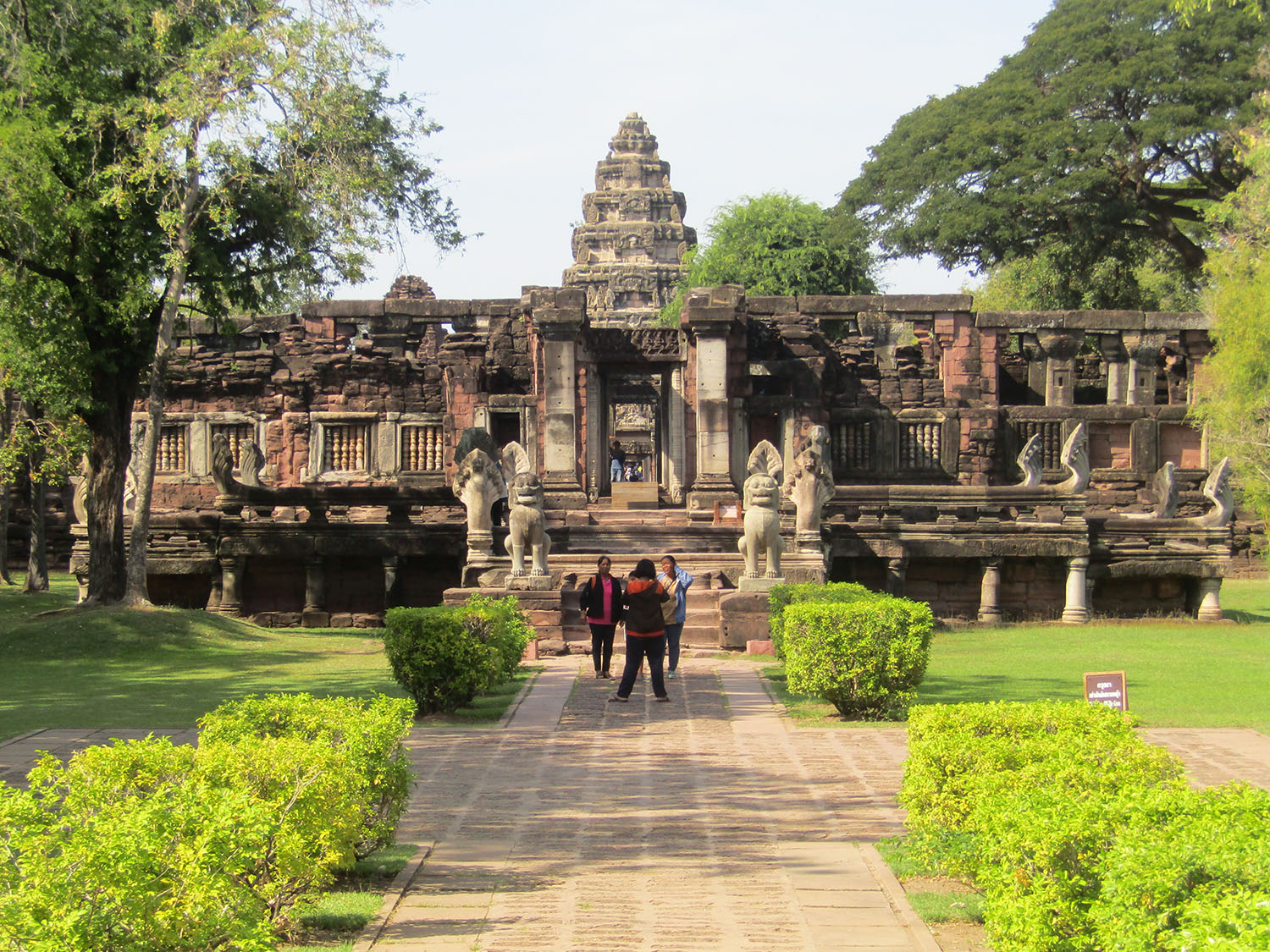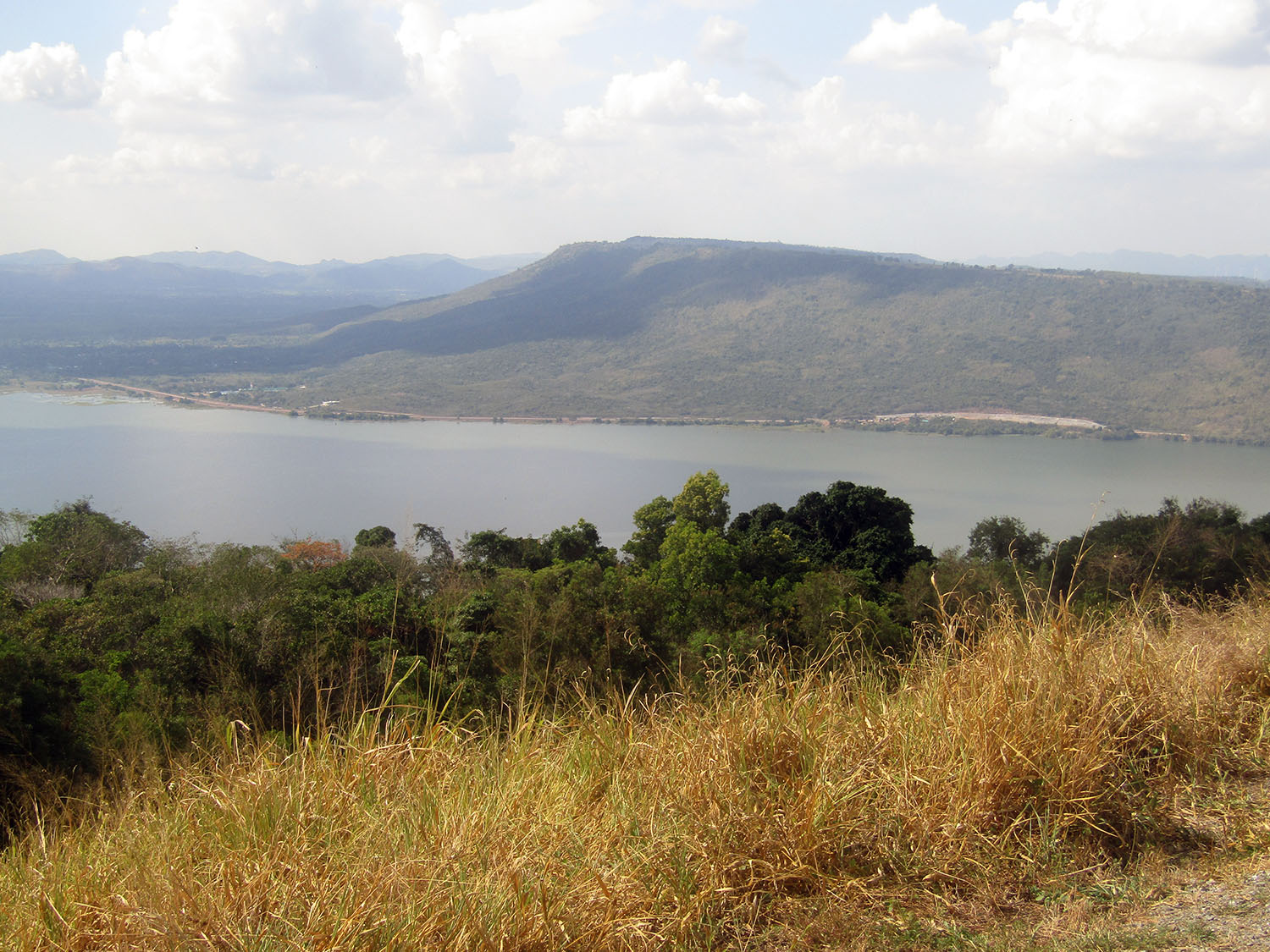|
|
 |
|
Nakhon Ratchasima is one of the four major cities of Isan, Thailand, known as the 'big four of Isan'. The city is commonly known as Korat, a reference to its historical past. It is the governmental seat of the Nakhon Ratchasima Province and Mueang Nakhon Ratchasima District. It is at the heart of the Nakhon Ratchasima metropolitan area. Korat is at the western edge of the Korat Plateau. Historically, it once marked the boundary between Lao and Siamese territory. It is the gateway to the Lao-speaking northeast (Isan). As of 2010, the municipal area had a population of 142,645. Etymology: Archeological evidence suggests that in Sung Noen District, 32 km west of present-day Nakhon Ratchasima (Korat) there were two ancient towns called Sema and Khorakapura in the Dvaravati Period but the latter became known as Nakhon Raj (sovereign walled city). In the Khmer era the old city was known as 'Ankor Raj' then shortened to Korat. The modern name is the combination of the two ancient city names from the Sanskrit (Nakon Raj and Sema). Geography: Nakhon Ratchasima is located on a large plateau known as the Korat Plateau with the Sankamphaeng Mountain Range to the south and the Dong Phaya Yen Range to the west. The Mun River is the main water source which flows east through the province while the Lamtakong dam and reservoir is an important source of power generation, irrigation and fishing. History: Prior to the 14th century, the area of Nakhon Ratchasima was under Khmer empire suzerainty and known in Khmer as Angkor Raj, Nokor Reach Seyma, or Nokor Reach Borei, and Koreach. Phimai, to the north, was probably more important. King Narai of Ayutthaya in the 17th century, ordered a new city built on the site to serve as a stronghold on Ayutthaya's northeastern frontier. Nakhon Ratchasima was thereafter mentioned in Siamese chronicles and legal documents as a "second-class" city of the Ayutthaya Kingdom. A royal governor ruled the city in a hereditary position. After the final phase of the Ayutthaya kingdom ended with its complete destruction by the Burmese in 1767, a son of King Boromakot attempted to set himself up ruler in Phimai, holding sway over Korat and other eastern provinces. King Taksin of the Thonburi Kingdom (1768–1782) sent two of his generals, brothers Thong Duang and Boonma, to defeat the prince, who was executed in 1768. Thong Duang later became King Rama I of the kingdom, and Korat became his strategic stronghold on the northeastern frontier to supervise the Lao and Khmer tributary states. In 1826, Vientiane King Chao Anouvong, perceiving Siam as weakened, attacked Korat in the Laotian Rebellion against King Rama III that was to rage on for two years. Lady Mo, the wife of the deputy governor at the time, is credited with having freed the city from Anouvong's army, and has been honored with a statue in the center of downtown Korat. A full account of the war and its impact on Laos and Siam, is detailed in the book, Lady Mo and Heroism at Tung Samrit, written by Frank G Anderson. The city's old wall, east of the monument was designed and built by a French engineer who is believed to be the one who also built Naraimaharaj Palace in Lopburi. The French-based design is reflected in the moat system that surrounds the innermost portion of the city. Nakhon Ratchasima continued to be an important political and economic center in the northeastern region under the Monthon administrative reforms of the late-19th century. In November 1900, the Royal State Railways of Siam began operation of the Nakhon Ratchasima Line from Bangkok with Korat Station as its terminus. The Ubon Ratchathani Line to the town of Warin opened 1 November 1922. The Thanon Chira Junction to Khon Kaen opened on 1 April 1933. Korat station was changed to Nakhon Ratchasima Railway Station in 1934. In October 1933, after the Siamese revolution of 1932 ended the absolute monarchy, the city became the headquarters of the Boworadet Rebellion, an abortive uprising against the new government in Bangkok. In April 1981 during another attempted coup, the government, together with the royal family, took refuge in Korat. From 1962-1976, during the Vietnam War, Korat Royal Thai Air Force Base hosted components of the Royal Thai Air Force, the United States Air Force, and a complement of the Royal New Zealand Air Force (RNZAF). After the US withdrawal in 1976, the Thai Air Force assumed full control. During the 1980s and early-1990s, the airfield was jointly operated as a civil airport for Nakhon Ratchasima. This ended with the opening of Nakhon Ratchasima Airport in the early-1990s. On 13 August 1993, Thailand's worst hotel disaster happened in the city, the collapse of the Royal Plaza Hotel, killing 137 people. Economy: Korat's economy has traditionally been heavily dependent on agriculture. It is known as a processing centre for Isan's production of rice, tapioca, and sugar. The Isan region accounts for half of Thailand's exports of those commodities. Together, these three agricultural commodities employ 700,000 Isan families. Korat is also one of two sites in Thailand manufacturing disk drives by Seagate Technology, employing 12,100 workers in Korat. Korat has also become the commercial hub, not only for Isan, but for neighbouring Cambodia and Laos. Tourism: Khao Yai National Park attracts by far the most tourists due to it's relatively short distance from Bangkok. The two provinces of Pak Chong and Wang Nam Chiao have natural environments particularly attractive to tourists. Further into the province sites at Phimai and Meuang Sema give an historical perspective while the Korat Geopark covering five districts adds more interesting sites especially in paleontology. Important monuments and religious sites can also be found within the province. The transport network is excellent with the Mittraphap Highway connection as well as air and rail links. |



|
Historic Sites: Phimai Historical Park, Mueang Sema, Thao Suranari Monument, Wat Dharmacakra Semaram (Phra Non), Prasat Muang Khaek, Phanom Wan Stone Sanctuary
Religious Sites:Wat Phra Narai Maharat, Wat Ban Rai
Natural Sites: Khao Yai National Park, Lamtakong Dam, Korat Geopark, Korat Fossil Museum, Korat Zoo, Sai Ngam
Religious Sites:Wat Phra Narai Maharat, Wat Ban Rai
Natural Sites: Khao Yai National Park, Lamtakong Dam, Korat Geopark, Korat Fossil Museum, Korat Zoo, Sai Ngam